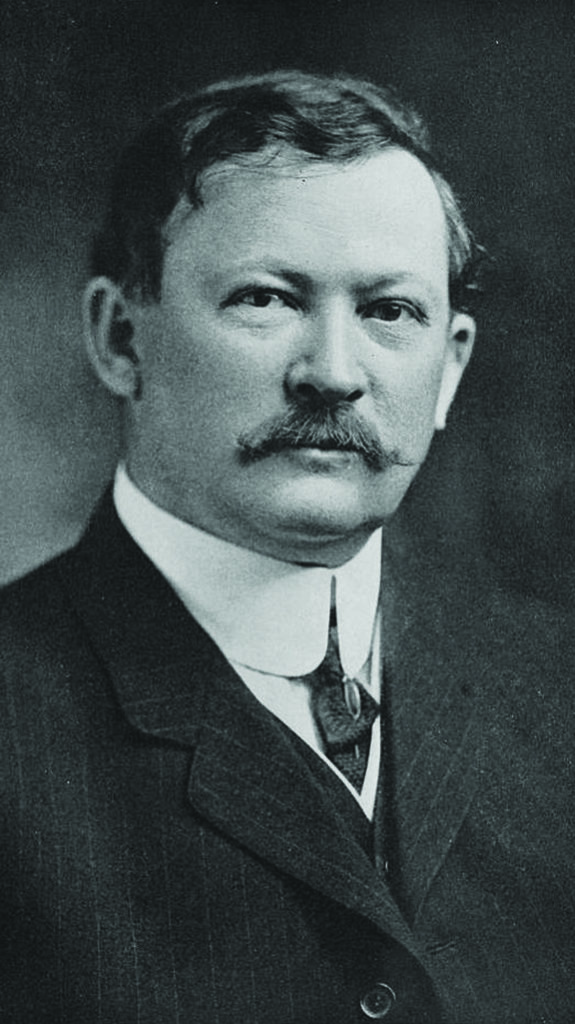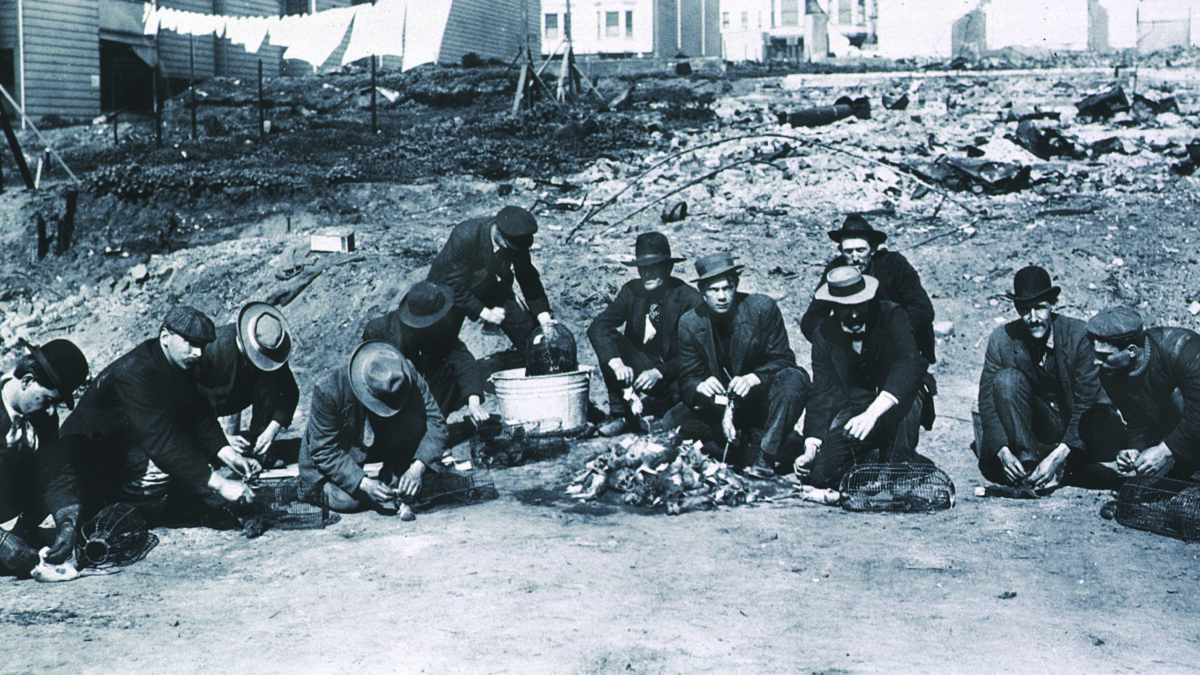Public health doctor Rupert Blue helped defeat outbreaks of plague and a plethora of deadly diseases
“Infectious disease is one of the few adventures left in the world,” wrote Hans Zinsser in his 1935 work Rats, Lice, and History. For medical adventurer Rupert Blue, such a chance beckoned in San Francisco in 1900. After a few deaths from plague came to light, business owners squared off with the leading local public health official, adamantly opposing a quarantine and pushing to suppress word of a mysterious ailment that was swiftly—but only occasionally—killing residents of San Francisco’s dilapidated, fetid Chinatown, where residents commonly crammed lightless subterranean quarters, defecating in latrines hacked out of the soil.

Blue, a 36-year-old physician, was assigned to manage the malady. Born into a North Carolina family with roots extending to the Revolutionary War, Blue had grown up in Marion, South Carolina, overshadowed by older brother Victor. Completing medical school in 1892, Rupert joined the Marine Hospital Service, a federal agency founded in 1798 to care for merchant sailors. The work took him all over. His path propelled him through Genoa, Italy; Portland, Oregon; New Orleans; San Francisco; New York; Cincinnati, Ohio; and Paris, France. His career spanned breakthroughs that transformed medicine and laid the groundwork for public health as a professional discipline.
Germ theory—the discovery that bacteria, and not foul air, for example, or racial ancestry, caused disease—dated only to 1882, when Robert Koch in Germany proved that an organism caused tuberculosis, previously blamed on disposition and climate. Theorists and practitioners came to recognize that innovation, including better diet and access to care, could improve public health. Little remembered today, Blue, a career public health doctor and U.S. surgeon general 1912-1920, was on the case for every one of those advances, including what he called “universal sickness insurance.”
The genial Blue arrived in San Francisco in 1901 with his wife, vivacious actress Juliette Downs. The scene was grim. When his predecessor flagged plague fatalities in Chinatown, the governor and local elites decried the “plague fake.” That resistance also drove Blue away, but in 1903 he returned—this time, backed by business and political leaders dismayed as the outbreak spread beyond Chinatown to infect whites. Rather than expand a quarantine bound to be disobeyed, Blue cultivated merchants and politicians and surveyed affected locales. Addressing Chinese cultural resistance to autopsies, Blue devised his own hearse in which he discreetly hauled corpses to his lab. He worked closely with Wong Chung, a translator and secretary who built bridges with Chinese residents and informally collected news Blue never could have. Blue’s wife, weary of their penurious, nomadic life, left him.
Blue saw that conditions had to change. “Man was no longer to be held responsible for the crime,” he recalled later. “In other words, it was a new orientation of the problem whereby isolation and quarantine, if practiced at all, would be applied to the potential rodent carrier.”
He declared war on rats in Chinatown, paying bounties for trapped rodents and condemning some 20 blocks of buildings whose owners had a choice: replace rat-friendly wooden foundations set atop earth with concrete or see their properties demolished. Blue’s staff dissected every rodent killed, testing for the plague-transmitting bacterium, Yersinia pestis, which only had been identified in 1894.
For two years, Blue steered a carefully aggressive public health campaign. San Francisco had eradicated plague by 1904, but when the disease roared back after the 1906 earthquake—though not in the area Blue had targeted—the same tactics ultimately prevailed. The city’s nine-year ordeal brought breakthroughs powered by the realization that plague there differed from outbreaks in Asia and elsewhere. In San Francisco plague often occurred a case at a time, and never seemed to strike more than a handful of patients. Over time, Blue’s lab, dubbed the Rattery, showed why. The type of flea common in San Francisco was less efficient at spreading the plague bacterium than the flea common in Asia, where plague raged. San Francisco outbreaks caused only a hundred-some known deaths. In 1909, San Francisco rewarded him with an expensive watch. His devotion to his career had cost him his marriage, but he had gained a profile as a trusted public health authority.
His track record and temperament poised Blue for appointment in 1912 as surgeon general of the United States, “in recognition of the remarkable development of the public health service under his direction and particularly for his efficient service in the eradication of the bubonic plague in San Francisco…” Over several years, Blue’s agency, renamed the Public Health Service, gained funds and personnel, tackling yellow fever, leprosy, smallpox, dengue, and tularemia, an animal-borne disease first studied and identified by PHS staff. Blue oversaw research on
tickborne diseases, hookworm, venereal diseases, malaria, typhoid
fever, and the mysterious pellagra, a scourge afflicting mostly poor Southerners, Black and white, and thought to have environmental or bacterial causes. Blue held with the environmentalists, citing pellagra patients’ monotonous diets. His intuition was excellent. In 1917 the doctor he assigned to study the disease, Joseph Goldberger, proved that pellagra arose from diets relying on milled corn, which had been stripped of the B-complex component now known as niacin.
In 1916, in his dual role as U.S. surgeon general and American Medical Association president, Blue promoted health insurance, noting the risks to 30 million workers. “To meet the situation, there are unmistakable signs that health insurance will constitute the next great step in social legislation,” he said. “Experience has shown that an adequate health insurance system should distribute the cost of sickness among those responsible for conditions causing it and thereby lighten the burden on the individual. Financial incentive may thus be given for the inauguration of comprehensive measures for the prevention of disease.”
Blue’s surgeon generalcy ended during the 1918 influenza pandemic, his earlier triumphs fading as the new pathogen ravaged the nation, sickening some 4 million people. Blue urged handwashing and papered the country with brochures. He invited doctors out of retirement and encouraged civic leaders to close up communities to halt the disease.
But he was also busy with issues arising among veterans returning from the war in Europe. His efforts against influenza did not meet the need. The flu spread quickly and surprisingly, concentrated among young adults, not the old. Some 675,000 Americans died.
In 1920, Blue was axed as surgeon general by Edith Wilson, who in effect was running the country because a stroke had disabled her husband, President Woodrow Wilson (“The Big Lie,” June 2017). Blue left for Paris to work for the PHS and the League of Nations. He retired in 1936 and died in Charleston, South Carolina, in 1948. His wide-ranging career is encapsulated in a quote attributed to him: “My greatest ambition is to clean up the United States.”





